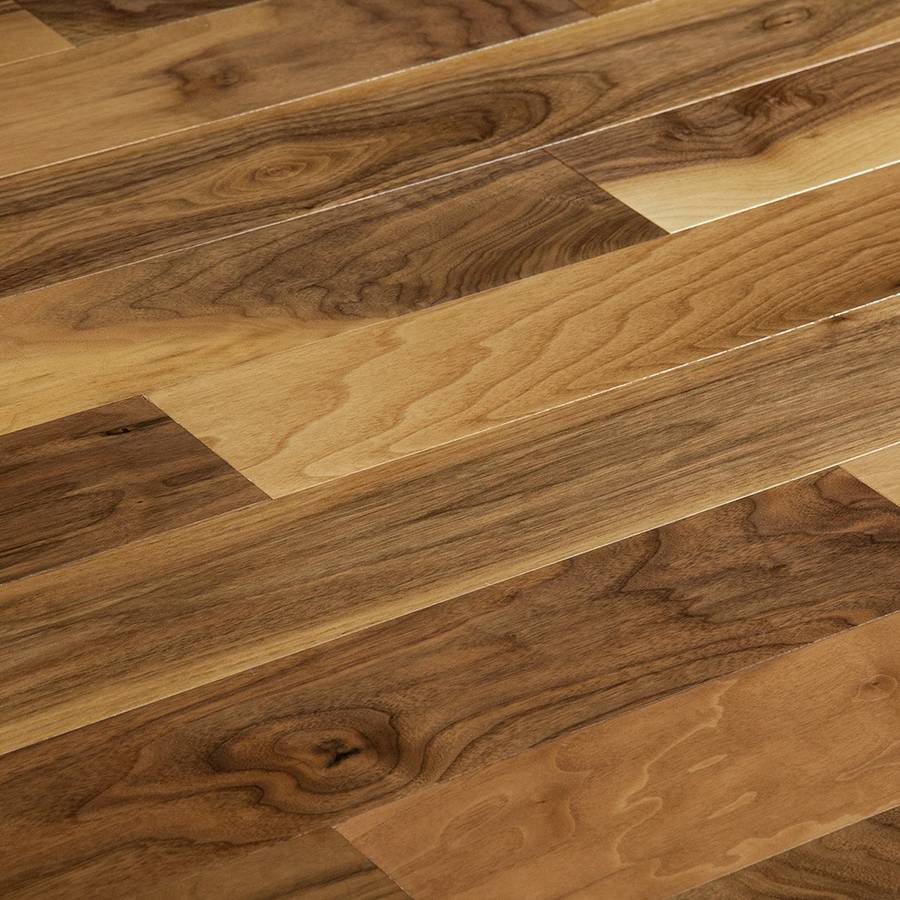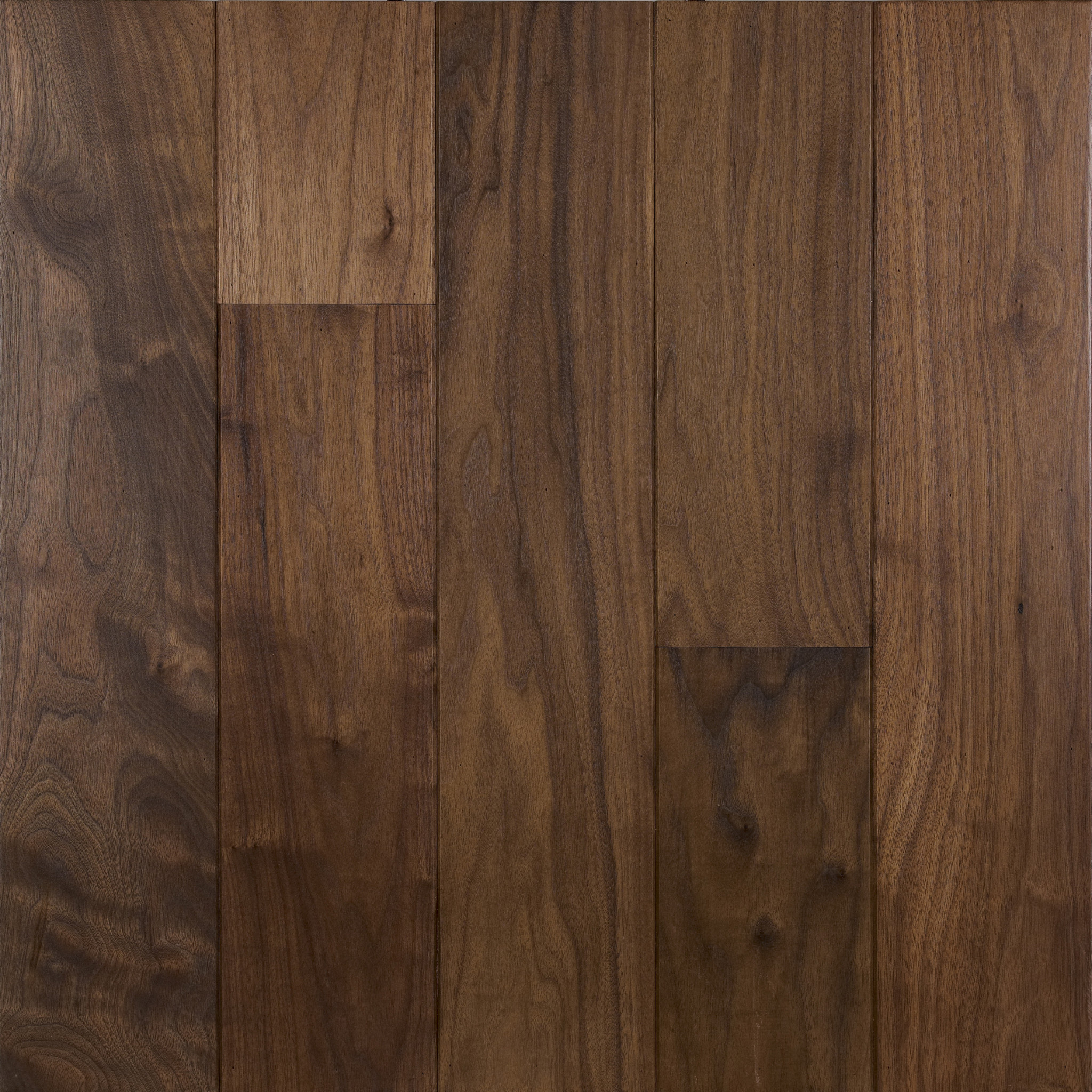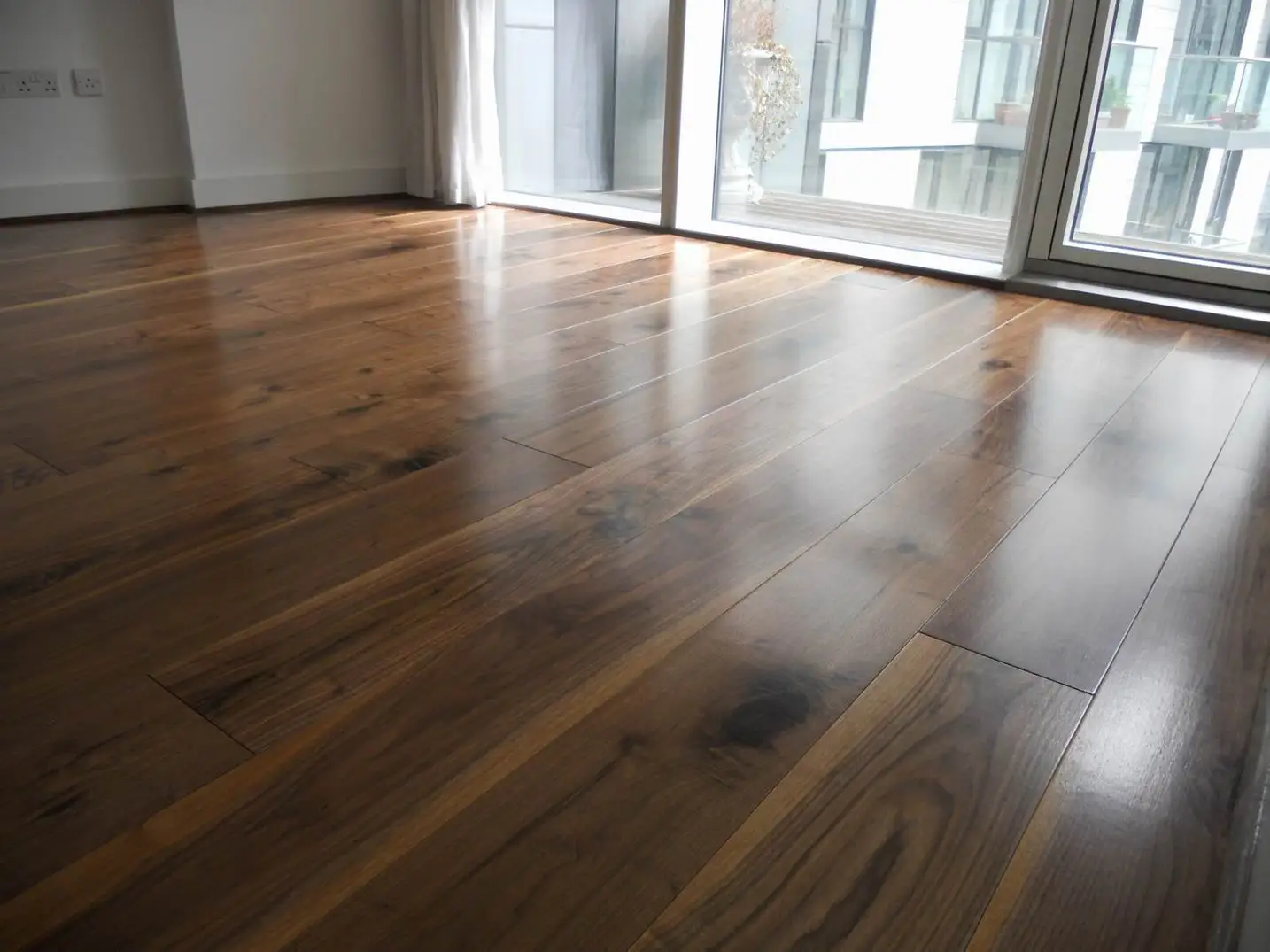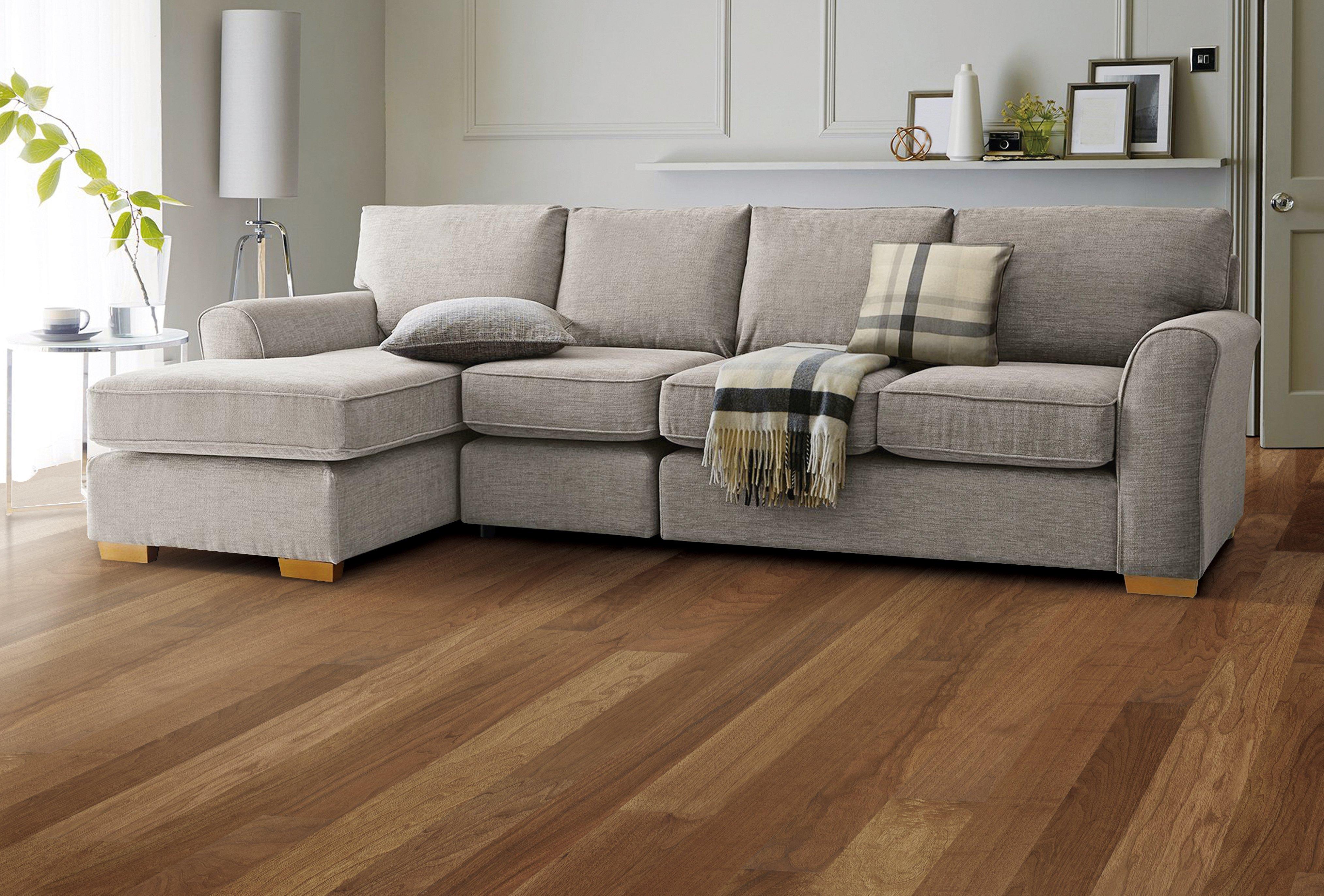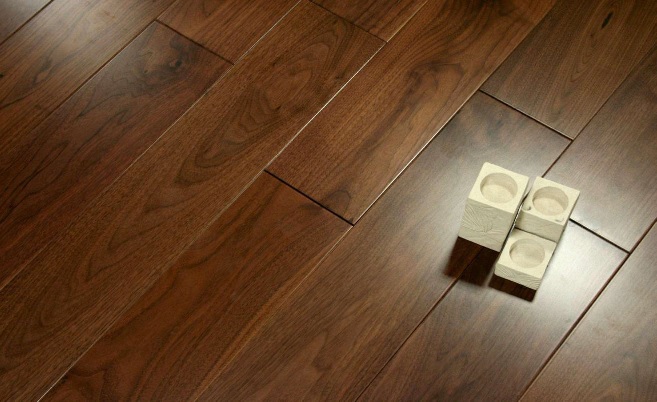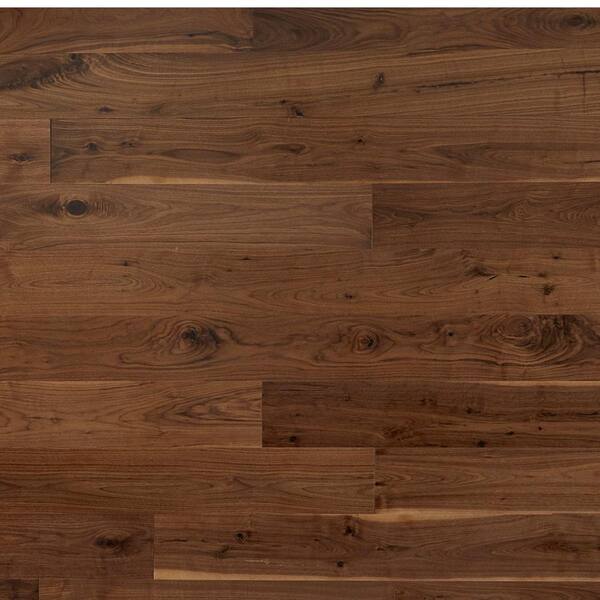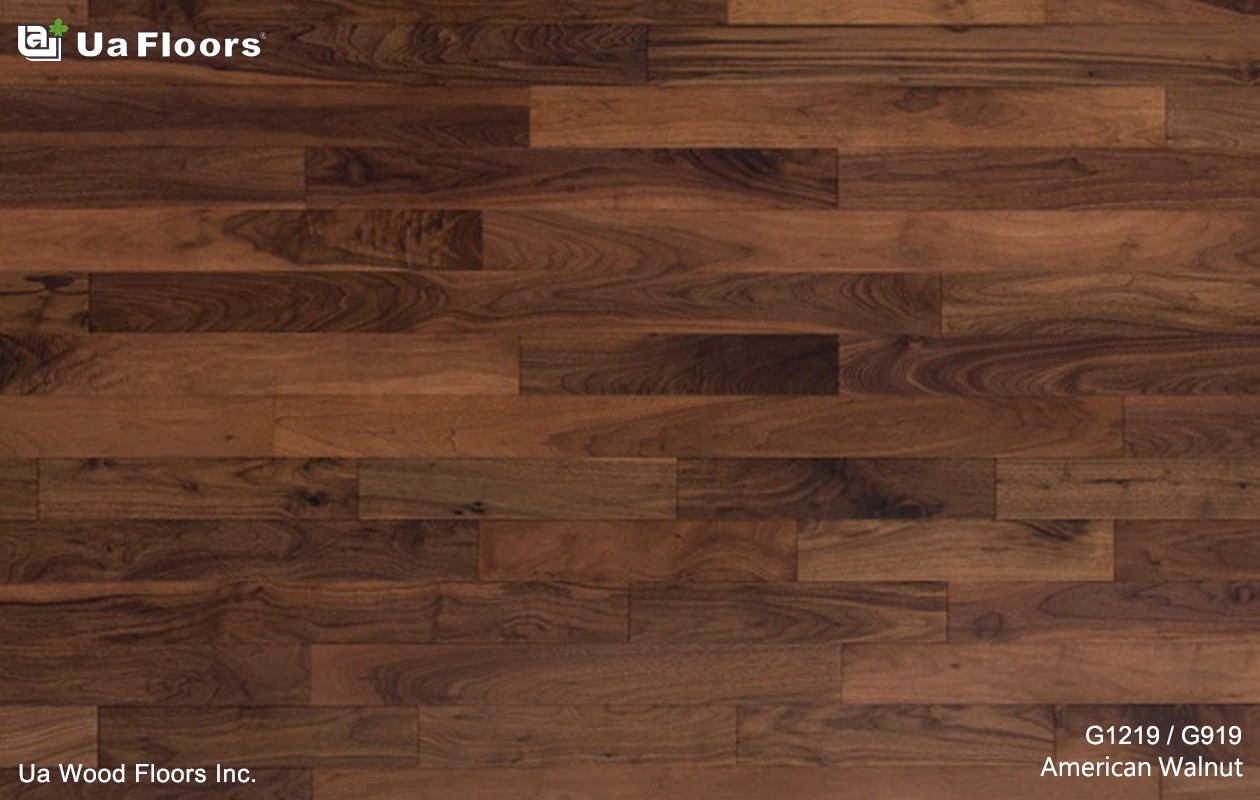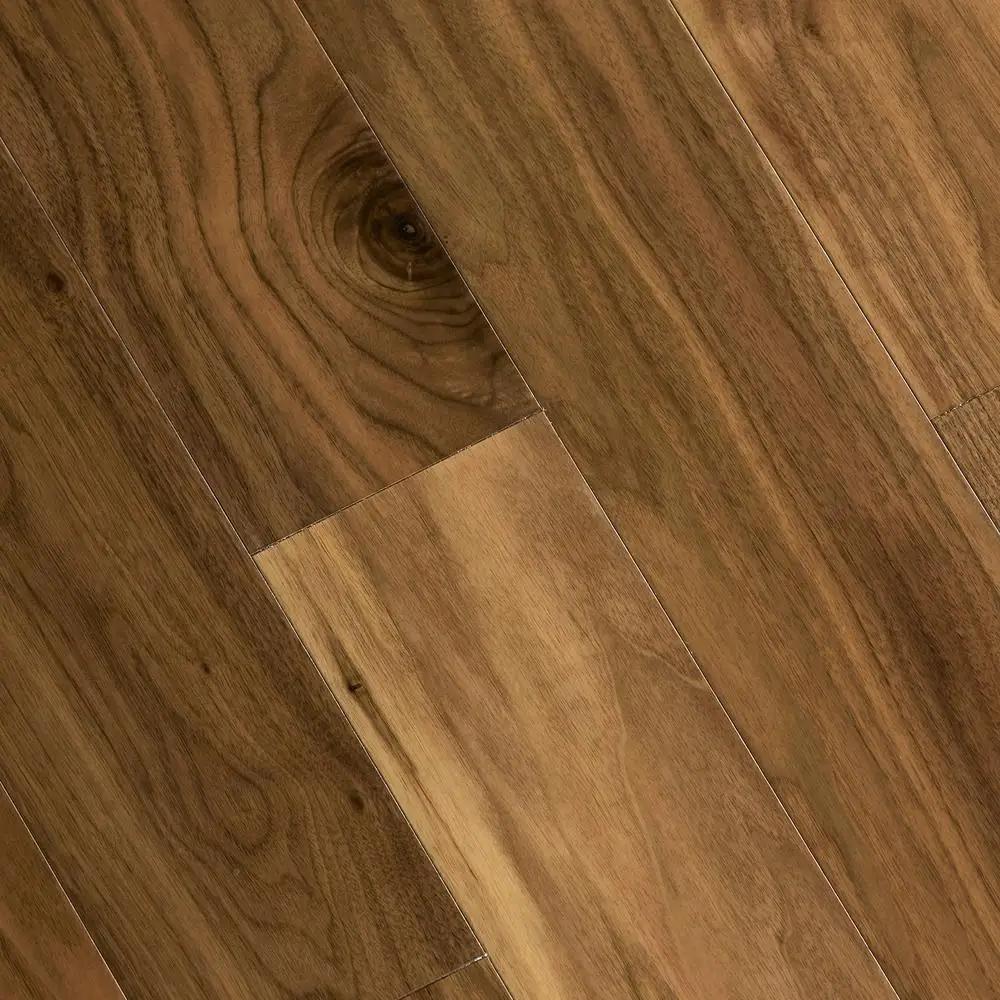Introduction to American Walnut Engineered Wood Flooring
American Walnut Engineered Wood Flooring is a popular choice among homeowners who desire a flooring option that combines the natural beauty of hardwood with the durability and versatility of engineered wood. With its timeless appeal and exceptional performance, American Walnut Engineered Wood Flooring has become a go-to option for those seeking elegance and functionality in their homes.
- The Origin and Characteristics: American Walnut, scientifically known as Juglans nigra, is a hardwood species native to North America. It is highly prized for its rich, dark tones and distinctive grain patterns. Engineered wood flooring, on the other hand, is made up of multiple layers of wood, with a top layer of American Walnut veneer. This construction enhances the stability of the flooring, making it less prone to expansion and contraction due to changes in temperature and humidity.
- Durability and Longevity: One of the key benefits of American Walnut Engineered Wood Flooring is its exceptional durability. The combination of the hardwood veneer and the engineered wood core provides a flooring option that can withstand heavy foot traffic and resist wear and tear. With proper care and maintenance, American Walnut Engineered Wood Flooring can last for decades, making it a wise investment for homeowners.
- Versatility and Compatibility: American Walnut Engineered Wood Flooring is known for its versatility, as it can complement a wide range of interior design styles. Whether your home has a modern, traditional, or rustic aesthetic, American Walnut Engineered Wood Flooring adds a touch of sophistication and warmth to any space. Its deep, chocolate-brown color and intricate grain patterns create a visually appealing backdrop for furniture and decor.
- Environmental Considerations: For environmentally conscious homeowners, American Walnut Engineered Wood Flooring offers a sustainable option. The use of engineered wood reduces the demand for solid hardwood, which helps preserve forests. Additionally, the manufacturing process of engineered wood consumes fewer resources compared to solid wood, making it a more eco-friendly choice.
- Easy Installation and Maintenance: Installing American Walnut Engineered Wood Flooring is relatively straightforward, thanks to its engineered construction. It can be glued down, nailed, or floated over various types of subfloors. The ease of installation makes it a popular choice for DIY enthusiasts. Furthermore, maintaining American Walnut Engineered Wood Flooring is relatively simple. Regular sweeping or vacuuming, occasional mopping with a damp cloth, and promptly addressing spills or stains are typically sufficient to keep the flooring looking its best.
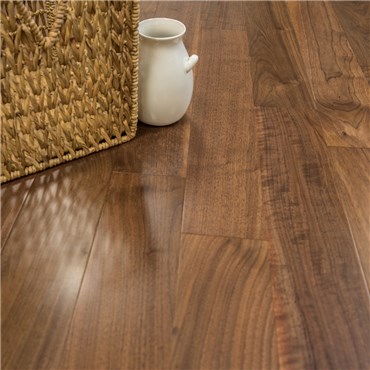
Benefits of American Walnut Engineered Wood Flooring
American Walnut Engineered Wood Flooring offers numerous benefits that make it a sought-after choice among homeowners. From its exceptional durability to its versatile design options, here are the key advantages of opting for American Walnut Engineered Wood Flooring in your home.
Durability and Strength
American Walnut Engineered Wood Flooring is renowned for its exceptional durability. The combination of the hardwood veneer and the engineered wood core creates a flooring option that can withstand heavy foot traffic and resist wear and tear. This durability makes it an ideal choice for high-traffic areas such as living rooms, kitchens, and hallways. Additionally, American Walnut is known for its hardness, which further enhances the flooring’s ability to withstand daily use and maintain its beauty for years to come.
Stability and Resistance to Moisture
Engineered wood flooring, including American Walnut Engineered Wood Flooring, is designed to be more stable than solid hardwood. The multiple layers of wood in its construction help minimize the expansion and contraction caused by changes in temperature and humidity. This stability makes it a suitable choice for areas with fluctuating moisture levels, such as kitchens and bathrooms, where solid hardwood may be more prone to warping or cupping.
Versatility in Design
Another major benefit of American Walnut Engineered Wood Flooring is its versatility in design. The natural beauty of American Walnut, with its rich, dark tones and intricate grain patterns, adds elegance and warmth to any space. Whether your home has a modern, traditional, or rustic aesthetic, American Walnut Engineered Wood Flooring complements a wide range of interior styles. It serves as a beautiful backdrop for furniture and decor, enhancing the overall ambiance of the room.
Easy Installation
Installing American Walnut Engineered Wood Flooring is relatively simple, making it an attractive choice for DIY enthusiasts. It can be glued down, nailed, or floated over various types of subfloors. The engineered construction of this flooring type also allows for installation in areas where solid hardwood may not be suitable, such as basements or rooms with concrete subfloors.
Longevity and Value
With proper care and maintenance, American Walnut Engineered Wood Flooring can last for decades, making it a long-term investment for homeowners. Its durability and resistance to wear ensure that it retains its beauty even in high-traffic areas. Additionally, the timeless appeal of American Walnut adds value to your home, making it an attractive feature for potential buyers should you decide to sell in the future.
Design and Aesthetics
American Walnut Engineered Wood Flooring is renowned for its timeless beauty and exquisite aesthetics. The rich, dark tones, intricate grain patterns, and luxurious appeal of this flooring option add warmth and elegance to any space. Whether you prefer a traditional, modern, or rustic interior design style, American Walnut Engineered Wood Flooring offers a range of design possibilities to enhance the ambiance of your home.
Rich, Dark Tones
One of the standout features of American Walnut Engineered Wood Flooring is its deep, chocolate-brown color. This rich tone adds a sense of luxury and sophistication to any room. Whether you opt for a satin or matte finish, the dark hues of American Walnut create a visually striking contrast against light-colored walls and furniture, making it a focal point in your interior design.
Intricate Grain Patterns
The grain patterns found in American Walnut add a unique and natural element to the flooring. The swirls, knots, and waves in the wood’s grain create a visually interesting and textured surface that adds depth and character to the room. The natural variations in the grain patterns ensure that no two planks of American Walnut Engineered Wood Flooring are exactly alike, making each installation truly unique.
Versatility in Design
American Walnut Engineered Wood Flooring is highly versatile, allowing it to adapt to various interior design styles. Its dark tones and intricate grain patterns can complement both traditional and modern aesthetics. In traditional settings, American Walnut adds warmth and richness, creating a cozy and inviting atmosphere. In contrast, in modern or contemporary spaces, it provides a sleek and sophisticated element that adds a touch of luxury.
Enhances Natural Light
The deep, dark tones of American Walnut Engineered Wood Flooring beautifully reflect natural light, brightening up the room and creating a sense of spaciousness. This feature is particularly beneficial for areas with limited natural light, such as basements or rooms with small windows. The flooring acts as a natural light amplifier, making the space feel more open and welcoming.
Timeless Appeal
American Walnut Engineered Wood Flooring has a timeless appeal that transcends trends and fads. Its classic and elegant look ensures that it will remain a stylish choice for years to come. Whether you’re designing a new home or renovating an existing space, American Walnut Engineered Wood Flooring guarantees a sophisticated and enduring foundation that will stand the test of time.
Maintenance and Care
Proper maintenance and care are essential to ensure the longevity and beauty of American Walnut Engineered Wood Flooring. By following a few simple guidelines, you can keep your flooring looking its best for years to come. Here are some tips and recommendations for maintaining and caring for your American Walnut Engineered Wood Flooring.
Regular Cleaning
Regular cleaning is key to maintaining the beauty of your American Walnut Engineered Wood Flooring. Sweep or vacuum the floor regularly to remove dust, dirt, and debris. Avoid using vacuums with beater bars, as they can cause scratches on the surface. For a deeper clean, use a damp mop or cloth with a mild cleaning solution specifically formulated for hardwood floors. Avoid using excessive water, as it can damage the wood. Always wipe up spills promptly to prevent staining or warping.
Preventing Scratches and Damage
While American Walnut Engineered Wood Flooring is durable, it is still susceptible to scratches and damage. Take preventive measures to protect your flooring. Place doormats at entrances to trap dirt and grit that can scratch the surface. Use furniture pads or felt protectors under furniture legs to prevent scratches when moving or rearranging furniture. Avoid wearing high heels or shoes with cleats on the flooring, as they can cause dents or scratches. Additionally, trim pets’ nails regularly to prevent them from scratching the wood.
Avoiding Excessive Moisture
Excessive moisture can cause damage to American Walnut Engineered Wood Flooring. Clean up spills immediately to prevent water from seeping into the wood and causing warping or staining. Use a damp cloth or mop for cleaning, rather than soaking the floor with water. Avoid using steam mops, as the moisture can penetrate the wood and cause damage. Keep the humidity level in your home between 35% and 55% to prevent the wood from expanding or contracting.
Protecting from Sunlight
Direct sunlight can cause American Walnut Engineered Wood Flooring to fade over time. Use window coverings, such as blinds or curtains, to protect the flooring from prolonged exposure to sunlight. Consider using UV-protective window films or applying a protective coating to the windows to reduce the harmful effects of UV rays. Rearrange furniture periodically to allow for even exposure to sunlight and prevent uneven fading.
Professional Maintenance
Occasionally, it may be necessary to seek professional maintenance for your American Walnut Engineered Wood Flooring. Professional refinishing can restore the beauty of the flooring by sanding and applying a new finish. This process helps remove scratches, stains, and signs of wear, giving your flooring a fresh look. Consult with a professional flooring contractor for recommendations on when and how to refinish your American Walnut Engineered Wood Flooring.
Considerations and Installation
When considering American Walnut Engineered Wood Flooring for your home, there are several factors to take into account. From room size and subfloor type to environmental considerations, these factors can influence the installation process and the overall performance of the flooring. Here are some important considerations to keep in mind before installing American Walnut Engineered Wood Flooring.
Room Size and Usage
Consider the size and function of the room where you plan to install American Walnut Engineered Wood Flooring. Larger rooms may benefit from wider planks, as they can create a more spacious and seamless look. Additionally, consider the level of foot traffic in the room. Areas with heavy foot traffic, such as hallways or entryways, may require more durable finishes or additional protective measures to ensure the longevity of the flooring.
Subfloor Type and Preparation
The type of subfloor in your home will determine the installation method for American Walnut Engineered Wood Flooring. This flooring can be installed over a variety of subfloors, including plywood, concrete, or existing hardwood. Ensure that the subfloor is clean, dry, and level before installation. Subfloor preparation may involve removing old flooring, repairing any damaged areas, and using a moisture barrier if necessary.
Environmental Considerations
American Walnut Engineered Wood Flooring is sensitive to changes in temperature and humidity. It is important to consider the environmental conditions of your home before installation. Ensure that the room has proper ventilation and maintain a stable humidity level between 35% and 55%. Extreme fluctuations in humidity can cause the wood to expand or contract, leading to issues such as warping or buckling. Installing a humidifier or dehumidifier may be necessary to regulate the humidity levels.
Acclimation Period
Before installation, allow the American Walnut Engineered Wood Flooring to acclimate to the room’s environment. This involves storing the flooring in the room where it will be installed for a recommended period of time. This allows the wood to adjust to the temperature and humidity of the room, minimizing the risk of issues such as shrinking or expanding after installation. Follow the manufacturer’s guidelines for the recommended acclimation period.
Professional Installation
While American Walnut Engineered Wood Flooring can be installed as a DIY project, professional installation is often recommended for optimal results. Professional installers have the expertise and tools to ensure a proper and seamless installation. They can also provide valuable advice on subfloor preparation, moisture testing, and choosing the right installation method for your specific needs. Hiring a professional ensures that the flooring is installed correctly and that any warranties or guarantees are upheld.
7.5″ Wide Plank Natural American Walnut Engineered Wood Flooring
Walnut Wood Flooring Floor & Decor
American Walnut
Engineered Wood Flooring American Walnut
ASPEN FLOORING American Walnut Caviar 5/8 in. T x 7.5 in. W x
Black American Walnut Chevron Parquet Flooring TW-E935 u2013 The
American Walnut Hardwood Flooring – Ua Floors
2mm Top Layer Wood Veneer American Walnut Sliced Engineered Timber
Related Posts:
- Real Wood Flooring In Kitchen
- Wood Floor Kitchen Cabinet Combination Designs
- Solid Wood Floor Repair Kit
- Dark Wood Floor Finishes
- Light Oak Solid Wood Flooring
- Grey Wood Floor In Bathroom
- Pledge Wood Floor Cleaner Spray
- Wide Plank Wood Flooring Cost
- Light Wood Flooring Ideas
- Click Lock Wood Flooring Pros And Cons
